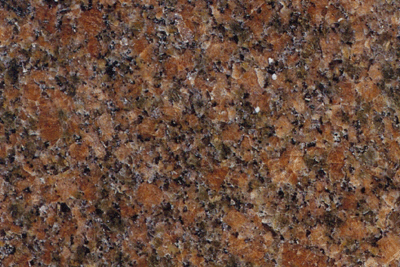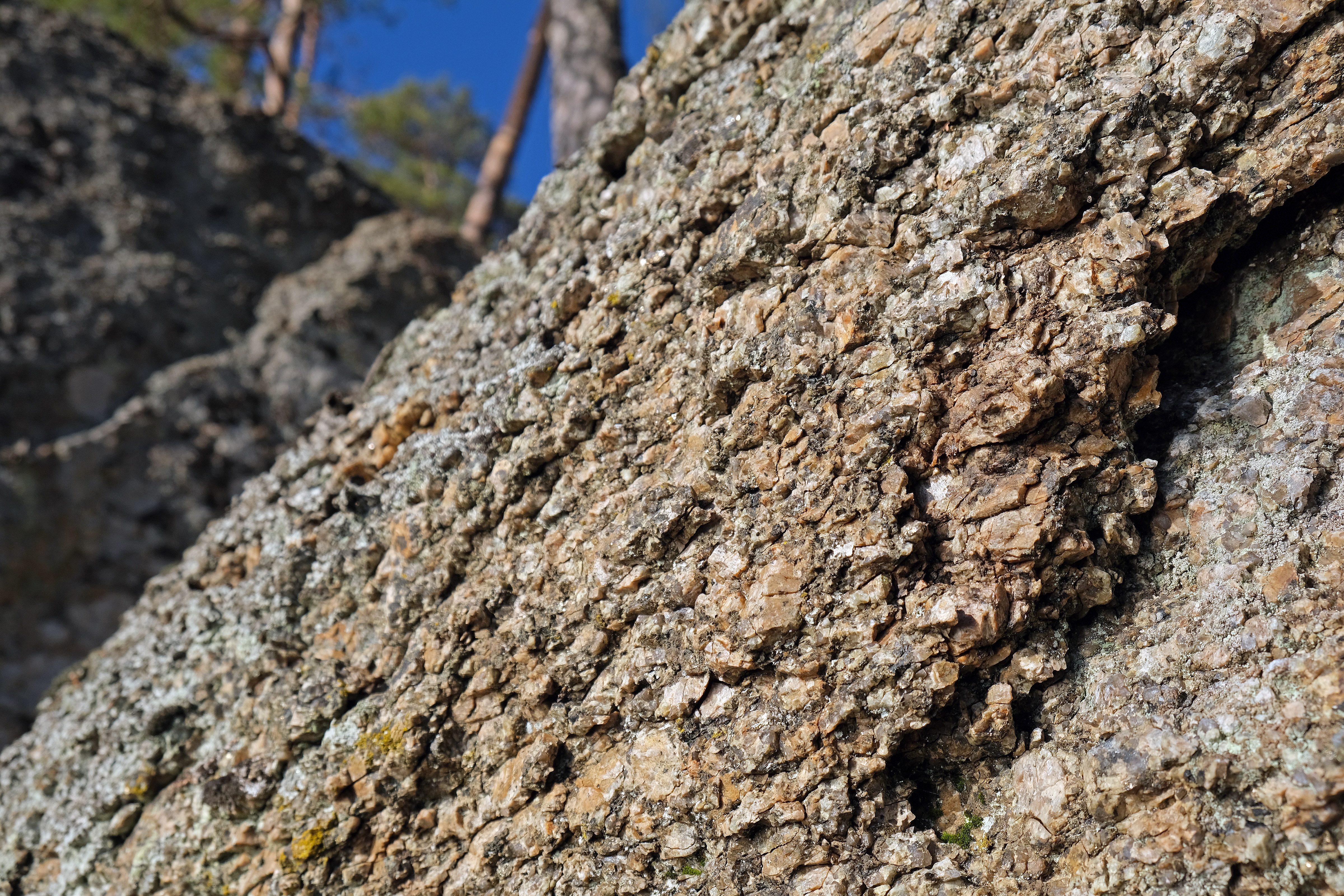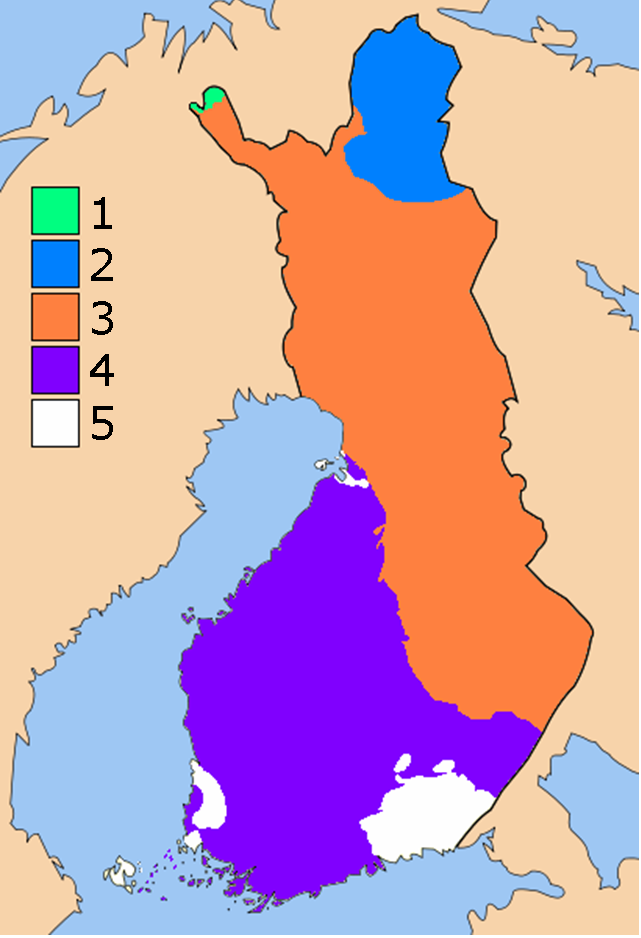|
Vaasa Granite
Vaasa granite is a migmatitic Paleoproterozoic garnet-bearing granitoid with variable amounts of gneissose enclaves. The name refers to occurrences at Vaasa, on the west coast of Finland. See also *Bohus granite *Jotnian *Rapakivi granite Rapakivi granite is a hornblende-biotite granite containing large round crystals of orthoclase each with a rim of oligoclase (a variety of plagioclase). The name has come to be used most frequently as a textural term where it implies plagioclase r ... * Satakunta dyke swarms References Granite Geology of Finland Paleoproterozoic magmatism {{Regional-geology-stub ... [...More Info...] [...Related Items...] OR: [Wikipedia] [Google] [Baidu] |
Migmatite
Migmatite is a composite rock found in medium and high-grade metamorphic environments, commonly within Precambrian cratonic blocks. It consists of two or more constituents often layered repetitively: one layer is an older metamorphic rock that was reconstituted subsequently by partial melting ("paleosome"), while the alternate layer has a pegmatitic, aplitic, granitic or generally plutonic appearance ("neosome"). Commonly, migmatites occur below deformed metamorphic rocks that represent the base of eroded mountain chains. Migmatites form under extreme temperature and pressure conditions during prograde metamorphism, when partial melting occurs in metamorphic paleosome. Components exsolved by partial melting are called neosome (meaning ‘new body’), which may or may not be heterogeneous at the microscopic to macroscopic scale. Migmatites often appear as tightly, incoherently folded veins ( ptygmatic folds).Recommendations by the IUGS Subcommission on the Systematics of M ... [...More Info...] [...Related Items...] OR: [Wikipedia] [Google] [Baidu] |
Paleoproterozoic
The Paleoproterozoic Era (;, also spelled Palaeoproterozoic), spanning the time period from (2.5–1.6 Ga), is the first of the three sub-divisions (eras) of the Proterozoic Eon. The Paleoproterozoic is also the longest era of the Earth's geological history. It was during this era that the continents first stabilized. Paleontological evidence suggests that the Earth's rotational rate ~1.8 billion years ago equated to 20-hour days, implying a total of ~450 days per year. Atmosphere Before the enormous increase in atmospheric oxygen, almost all existing lifeforms were anaerobic organisms whose metabolism was based on a form of cellular respiration that did not require oxygen. Free oxygen in large amounts is toxic to most anaerobic organisms. Consequently, most died when the atmospheric free oxygen levels soared in an extinction event called the Great Oxidation Event, which brought atmospheric oxygen levels to up to 10% of their current level. The only creatures that survi ... [...More Info...] [...Related Items...] OR: [Wikipedia] [Google] [Baidu] |
Granite
Granite () is a coarse-grained (phaneritic) intrusive igneous rock composed mostly of quartz, alkali feldspar, and plagioclase. It forms from magma with a high content of silica and alkali metal oxides that slowly cools and solidifies underground. It is common in the continental crust of Earth, where it is found in igneous intrusions. These range in size from dikes only a few centimeters across to batholiths exposed over hundreds of square kilometers. Granite is typical of a larger family of ''granitic rocks'', or ''granitoids'', that are composed mostly of coarse-grained quartz and feldspars in varying proportions. These rocks are classified by the relative percentages of quartz, alkali feldspar, and plagioclase (the QAPF classification), with true granite representing granitic rocks rich in quartz and alkali feldspar. Most granitic rocks also contain mica or amphibole minerals, though a few (known as leucogranites) contain almost no dark minerals. Granite is nearly alway ... [...More Info...] [...Related Items...] OR: [Wikipedia] [Google] [Baidu] |
Gneiss
Gneiss ( ) is a common and widely distributed type of metamorphic rock. It is formed by high-temperature and high-pressure metamorphic processes acting on formations composed of igneous or sedimentary rocks. Gneiss forms at higher temperatures and pressures than schist. Gneiss nearly always shows a banded texture characterized by alternating darker and lighter colored bands and without a distinct cleavage. Gneisses are common in the ancient crust of continental shields. Some of the oldest rocks on Earth are gneisses, such as the Acasta Gneiss. Description Orthogneiss from the Czech Republic In traditional English and North American usage, a gneiss is a coarse-grained metamorphic rock showing compositional banding (gneissic banding) but poorly developed schistosity and indistinct cleavage. In other words, it is a metamorphic rock composed of mineral grains easily seen with the unaided eye, which form obvious compositional layers, but which has only a weak tendency to fracture ... [...More Info...] [...Related Items...] OR: [Wikipedia] [Google] [Baidu] |
Vaasa
Vaasa (; sv, Vasa, , Sweden ), in the years 1855–1917 as Nikolainkaupunki ( sv, Nikolajstad; literally meaning "city of Nicholas),Vaasa oli ennen Nikolainkaupunki ja Aurinkolahti Mustalahti – paikannimiä ei kuitenkaan pidä muuttaa heppoisin perustein – '''' (in Finnish) is a city on the west coast of . It received its charter in 1606, during the reign of [...More Info...] [...Related Items...] OR: [Wikipedia] [Google] [Baidu] |
Finland
Finland ( fi, Suomi ; sv, Finland ), officially the Republic of Finland (; ), is a Nordic country in Northern Europe. It shares land borders with Sweden to the northwest, Norway to the north, and Russia to the east, with the Gulf of Bothnia to the west and the Gulf of Finland across Estonia to the south. Finland covers an area of with a population of 5.6 million. Helsinki is the capital and largest city, forming a larger metropolitan area with the neighbouring cities of Espoo, Kauniainen, and Vantaa. The vast majority of the population are ethnic Finns. Finnish, alongside Swedish, are the official languages. Swedish is the native language of 5.2% of the population. Finland's climate varies from humid continental in the south to the boreal in the north. The land cover is primarily a boreal forest biome, with more than 180,000 recorded lakes. Finland was first inhabited around 9000 BC after the Last Glacial Period. The Stone Age introduced several differ ... [...More Info...] [...Related Items...] OR: [Wikipedia] [Google] [Baidu] |
Bohus Granite
The Bohus granite ( sv, Bohusgranit) is a type of granite that crops out along the Swedish West Coast in Bohuslän. In Norway the same granites are termed Iddefjord granite ( no, Iddefjordsgranitt), Østfold granite and Halden granite. A large quarrying industry has developed around the granites, mainly producing blocks. Large scale extraction begun in the 1840s and employment in the quarries peaked in the 1920s with over 7,000 people working in the industry. The rock is valued for its durability. In the first half of the 20th century the transport of quarried Bohus granite was done with the aid of by the Lysekil Line. In Norway Iddefjord granite has been a relatively common rock in architecture, and many of the statues of Frogner Park in Oslo are made of Iddefjord granite. Iddefjord granite is the official county rock of Østfold in Norway. Geology Geologically the Bohus is a monzogranite, a subtype of granite. Besides the main minerals plagioclase, K-feldspar and quartz the Bohus ... [...More Info...] [...Related Items...] OR: [Wikipedia] [Google] [Baidu] |
Jotnian
In north European geology, Jotnian sediments are a group of Precambrian rocks more specifically assigned to the Mesoproterozoic Era ( Riphean), albeit some might be younger. Jotnian sediments include the oldest known sediments in the Baltic area that have not been subject to metamorphism. Stratigraphically, Jotnian sediments overlie the rapakivi granites and other igneous and metamorphic rocks and are often intruded by younger diabases. Overview Jotnian sediments include quartz-rich sandstones, siltstones, arkose, shale and conglomerates. The characteristic red colour of Jotnian sediments is due to their deposition in subaerial (e.g. non-marine) conditions. Jotnian sediments are the oldest known sediments in the Baltic area that have not been subject to metamorphism. Their age is poorly constrained, but generally they are younger than the rapakivi granites and older than ''Postjotnian'' diabases that intrude the sediments. This means that Jotnian sediments were deposited ap ... [...More Info...] [...Related Items...] OR: [Wikipedia] [Google] [Baidu] |
Rapakivi Granite
Rapakivi granite is a hornblende-biotite granite containing large round crystals of orthoclase each with a rim of oligoclase (a variety of plagioclase). The name has come to be used most frequently as a textural term where it implies plagioclase rims around orthoclase in plutonic rocks. Rapakivi is a Finnish compound of "rapa" (meaning "mud" or "sand") and "kivi" (meaning "rock"), because the different heat expansion coefficients of the component minerals make exposed rapakivi crumble easily into sand. Rapakivi was first described by Finnish petrologist Jakob Sederholm in 1891. Since then, southern Finland's rapakivi granite intrusions have been the type locality of this variety of granite. Occurrence Rapakivi is a fairly uncommon type of granite, but has been described from localities in North and South America ( Illescas Batholith, Uruguay, Rondônia, Brazil) parts of the Baltic Shield, southern Greenland, southern Africa, India and China. Most of these examples are found wi ... [...More Info...] [...Related Items...] OR: [Wikipedia] [Google] [Baidu] |
Satakunta Dyke Swarms
The Satakunta dyke swarms are a series of dyke swarms, a group of magmatic intrusions, of Mesoproterozoic age in the Bothnian Sea and western and central Finland. They are made up of Subjotnian diabase dikes, associated with rapakivi magmatism. They were most likely formed on the Columbia supercontinent. Föglö dyke swarm Häme dyke swarm The Häme dyke swarm formed due to the upwelling of mantle, possibly related to the Gothian orogeny. The swarms were triggered by extensional plate tectonics and convection of hot upper mantle. Tholeiitic magmas, formed under the continental lithosphere, were probably encouraged by elevated mantle temperature underneath the Columbia supercontinent. The time of formation was approximately 1640 million years ago. Satakunta-Ulvö dyke swarm The dyke swarm has been considered to be a result of a failed rift in the Bothnian Sea that developed as part of an extensional tectonic setting within the supercontinent of Columbia. At various ... [...More Info...] [...Related Items...] OR: [Wikipedia] [Google] [Baidu] |
Geology Of Finland
The geology of Finland is made up of a mix of geologically very young and very old materials. Common rock types are orthogneiss, granite, metavolcanics and metasedimentary rocks. On top of these lies a widespread thin layer of unconsolidated deposits formed in connection to the Quaternary ice ages, for example eskers, till and marine clay. The topographic relief is rather subdued because mountain massifs were worn down to a peneplain long ago. Precambrian shield The bedrock of Finland belongs to the Fennoscandian Shield and was formed by a succession of orogenies during the Precambrian. The oldest rocks of Finland, those of Archean age, are found in the east and north. These rocks are chiefly granitoids and migmatitic gneiss. Rocks in central and western Finland originated or were emplaced during the Svecokarelian orogeny. Following this last orogeny rapakivi granites intruded various locations of Finland during the Mesoproterozoic and Neoproterozoic, especially in Åland a ... [...More Info...] [...Related Items...] OR: [Wikipedia] [Google] [Baidu] |







